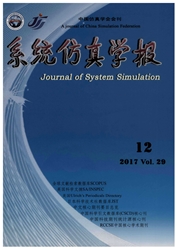

 中文摘要:
中文摘要:
智能化是当今世界的发展趋势。智能材料结构作为研究热点之一,应用于航空、航天、生物及医药等诸多领域。智能作动器与智能传感器是智能材料结构的两个主要研究方向。迟滞现象是存在于大量智能材料中的非线性现象,对整个控制系统可能带来不良影响,如稳定性的恶化甚至丧失等。Preisach模型常用于智能材料中针对迟滞现象的建模。基于一阶滞回曲线获得智能作动器的输入输出数据,从理论上研究了经典Preisach模型两种工程上易实现的辩识方法,并应用到一种真实的智能作动器——WIDS-IA压电型作动器,仿真与实验结果表明,两种辩识方法均有效,且误差在同一数量级.为广泛存在迟滞非线性的智能作动器建模提供了理论依据,并具有工程实用价值.
 英文摘要:
英文摘要:
Intelligence is the trend of this world. Smart material structure is a hotspot for it can be used in the area of aeronautics, astronautics, biology and medicine, etc. Smart actuator and smart sensor are two main parts of smart material structure. Hysteresis is a nonlinear phenomenon existing in a large quantity of smart materials which can lead to bad effects on control plants. Preisach model is widely used in the modeling of smart materials. The I/O data of smart actuator was obtained based on first order reversal curves (FORCs), and theoretical research of two methods to identify the classical Preisach model was studied. The simulation and experimental results of a smart actuator--WIDS-IA piezo actuator show the validity and the consistency of these two methods.
 同期刊论文项目
同期刊论文项目
 同项目期刊论文
同项目期刊论文
 期刊信息
期刊信息
